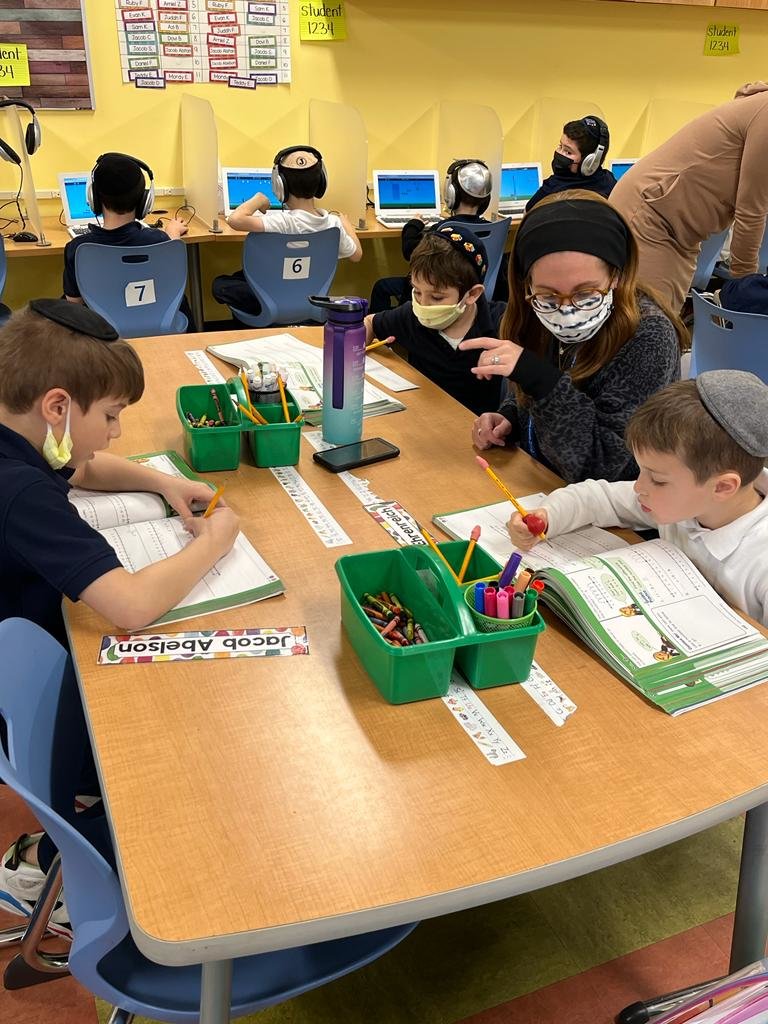‘Aha moment’ for HALB educators
Moving from the traditional “sage on the stage” teaching model, in which teachers stand in front of the classroom and present educational material to students in lecture form, the Hebrew Academy of Long Beach, in Woodmere, has for the past seven years used blended learning: smaller groups of students receiving one-on-one instruction while integrating academics and technology for a more personalized experience from kindergarten through eighth grade.
HALB has now begun applying blended learning to its Lev Chana Early Childhood Center in Hewlett Bay Park, with children that are 3, 4 and 5, across a dozen classrooms that have four to six students at each table and others at computer terminals.
“With frontal learning, a teacher standing in front of the class, 75 to 80 percent understand what is being taught,” said Felecie Akerman, a co-director, with Lisa Zakutinsky, of the Early Childhood Center. Akerman added that in that situation, a portion of the class “has no clue.”
In the blended-learning model, Akerman said, “Everyone is getting what they need in the way they need it.”
The classroom environment, with smaller groups of students working on a problem and seeking solutions, creates calm and reduces behavioral issues, she said.
“Oh my gosh, does it ever,” Akerman said. “Why do children misbehave? Because they are craving attention. Here there is much attention, the children love it, feel it and receive immediate feedback.”
David Marks, HALB’s director of blended learning and education analytics, tracks the data to help ensure that the program is on track and the students are progressing.
He noted that the blended-learning model the school is using jumps off from Bloom’s Taxonomy, which categorizes learning into three hierarchical models: cognitive, affective and sensory.
The creators of that influential educational framework studied multiple factors that impact student learning, from homework to home environment.
Marks said that the most influential factor was the impact on students of tutoring small groups.
Now, with today’s computer software, he explained, teachers can accurately assess how the students in a blended-learning program are performing, identify their strengths and areas of concern and make adjustments to the program.
“It’s about the small groups,” Marks said, “and doing what teachers do best is our goal.” With the children working on their own, he added, “There’s more bang for the buck, and in terms of engagement, you’re maximizing engagement and feedback.”
Richard Altabe, HALB’s lower-school principal, has been working with the blended-learning model for several years, and endorses what he views as its upside.
“With the smaller groups it is more personal — there are very, very high levels of engagement in the classroom,” Altabe said. “There are no discipline problems, because everyone is busy working and everyone’s needs are addressed. There are so many skills to learn at the elementary level, doing it with blended learning helps it ensure everyone grows.”
Akerman described the goal of every teacher, the “aha moment” when students understand the material and solve a problem. Of seeing children work in small groups to solve a difficult puzzle, she said, “When a child’s eyes widen in the aha moment, it’s such an amazing thing to watch.”
HALB is also applying blended learning to Judaic studies in the second, third and fourth grades. Marks said the resources for creating a blended-learning program for Judaic studies are much more limited than general studies, but the key remains engagement. “We have a good foundation,” he said, “and excellent teachers willing to learn.”

 51.0°,
Fog/Mist
51.0°,
Fog/Mist 




